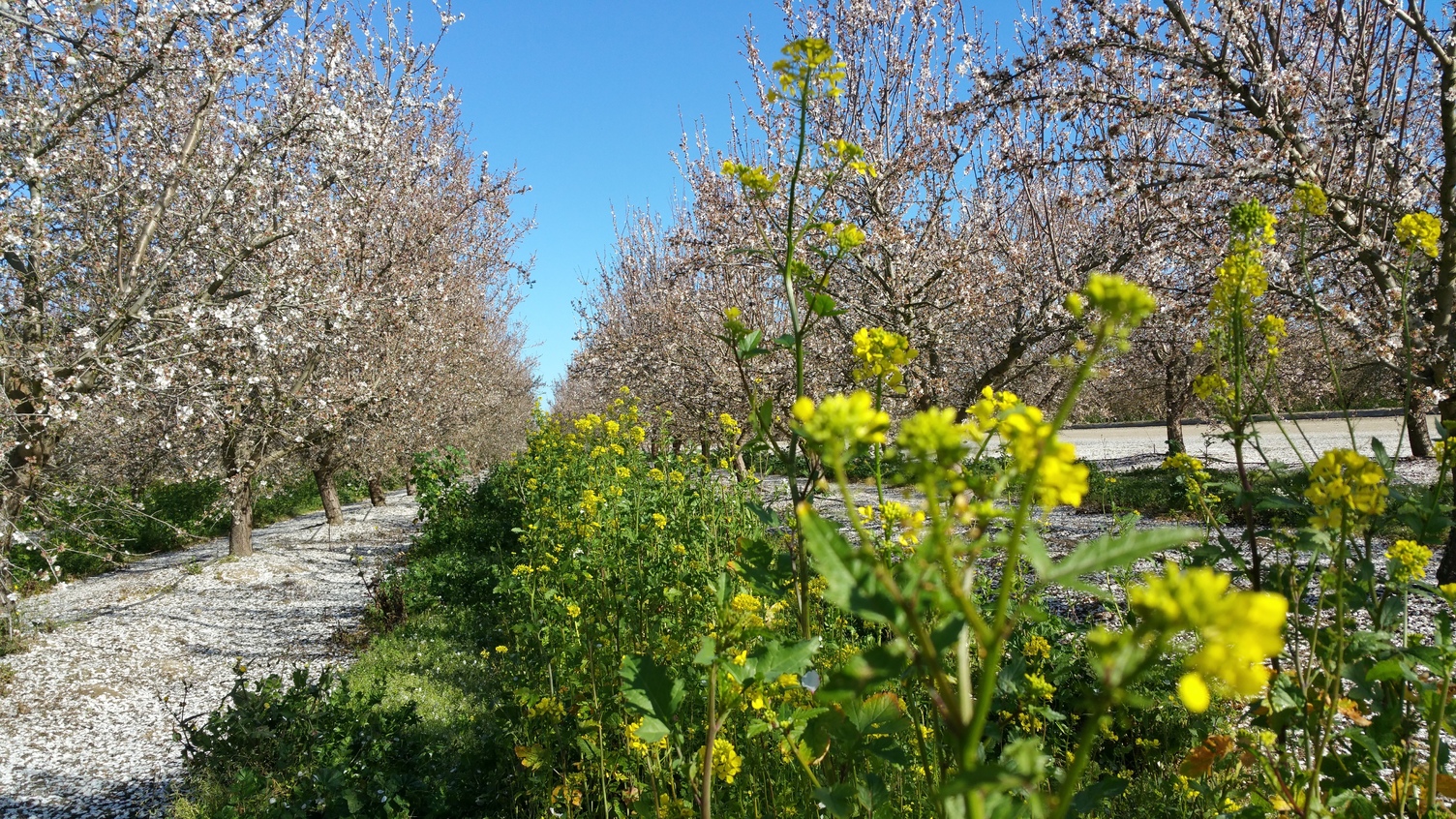It’s hard to imagine a grower more passionate about cover crops than Ben King.
 The owner of Colusa-based Pacific Gold Agriculture has been planting cover crops in his almond and pecan orchards for years, and King is also an enthusiastic advocate of the Seeds for Bees program. Overseen by Project Apis m., this program encourages the planting of cover crops in and around California orchards, farms and vineyards to provide and increase the variety in forage available to honey bees and other pollinators by providing cover crop seed for free of charge to growers.
The owner of Colusa-based Pacific Gold Agriculture has been planting cover crops in his almond and pecan orchards for years, and King is also an enthusiastic advocate of the Seeds for Bees program. Overseen by Project Apis m., this program encourages the planting of cover crops in and around California orchards, farms and vineyards to provide and increase the variety in forage available to honey bees and other pollinators by providing cover crop seed for free of charge to growers.
The prime time to plant cover crops is anywhere from October through November, experts say. King has a simple message to almond growers who may be on the fence about whether to plant cover crops in their orchards: “Do it, or at least, try it.”
While cover crops can bring some logistical challenges into the orchard system, by focusing on winter-to-spring growing cover crops almond growers can provide pollinators with a supplemental food source. In addition, King has found that his cover crops have improved the quality of his soils by increasing organic matter content and improving water infiltration and retention.
“What can everyone agree on? That bees are important,” King said. “We want to really support our partners in the apiary industry. We can’t produce a commercial almond crop without a healthy bee industry.”
King typically plants a blend of clover and mustard mixes between the rows in his almond orchards.
“There is nothing better than being out on a spring day and seeing bees, lady beetles, butterflies and other native pollinators in the mustard,” he said. “That diversity has enormous benefits to our industry.”
The advantages of cover crops to bee health have been well-documented (see page 16 of ABC’s Honey Bee Best Management Practices). Because a majority of honey bees brought to California for almond pollination are in the state well before bloom, providing supplemental forage both before and after bloom gives the bees’ health a significant boost. What’s more, data shows that bees are not distracted by the forage – they truly make a bee line for the almond blossoms before visiting other flowers.
Research funded by the Almond Board of California continues to analyze the role cover crops can play not only in supporting honey bee health and improving soil structure and stability, but also whether it conflicts with or enhances winter sanitation practices to combat Navel Orangeworm. While cover crops can be easier to establish in the wetter parts of California’s Central Valley, current research also looking into mixes that may work in drier areas.
Growers are also encouraged to provide feedback on their experiences with cover crops via an ongoing UC Davis survey. The objective of this survey is to better understand growers’ motivators and barriers of cover crop use, and to gain a better understanding of the management practices used by growers who utilize cover crops on their operation. Growers may click this link to complete the five-minute survey.
Because of steady grower interest in Seeds for Bees, Project Apis m. has extended the deadline to apply for this program to Nov. 22. Growers are encouraged to visit the Seeds for Bees website to learn more and submit their application to receive FREE cover crop mixes today.


